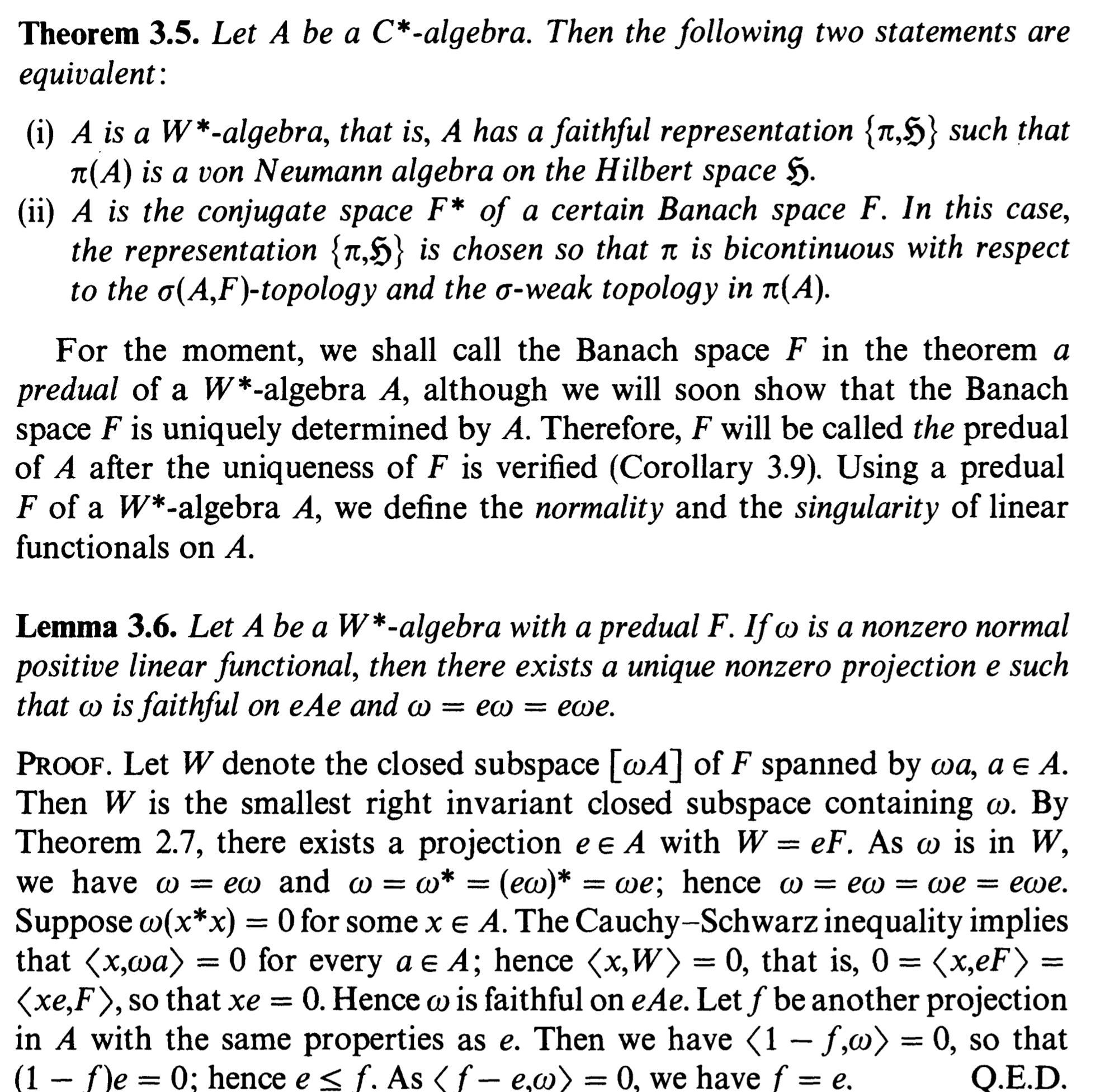Consider the following fragments in Takesaki's "Theory of operator algebras" (volume I):
Question: So, we have an abstract Banach space $F$ with $A \cong F^*$. In Lemma 3.6, one considers the closed subspace $W:= [\omega A]\subseteq F$. I'm guessing that $$\omega A := \{\omega(a-): a \in A\}$$ or something like that. However, this looks like a subset of $A^*$, so I'm not sure why it is a subspace of $F$. I thought to look at the canonical embedding $F \hookrightarrow F^{**}\cong A^*$ but this also makes not sense. What does the phrase "$\omega$ is normal" mean in this context? Does it mean that $\omega$ is continuous with the topology coming from the duality $F^* \cong A$ or does it simply mean that $\omega$ is $\sigma$-weakly continuous?
Any clarification on the matter will be greatly appreciated!

